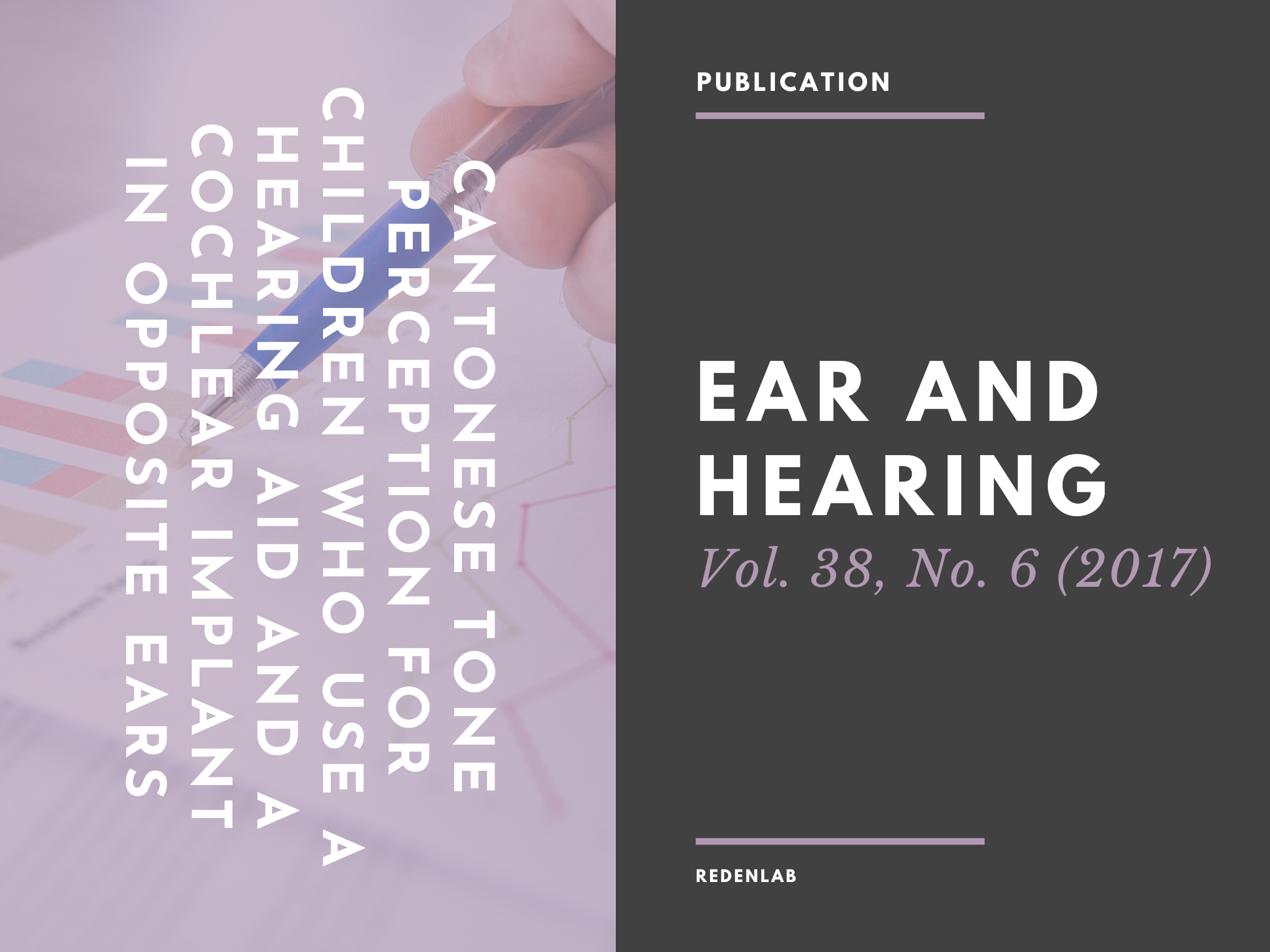SCIENCE: Cantonese tone perception for children who use a hearing aid and a cochlear implant in opposite ears

Objectives: The ability to recognize tones is vital for speech perception in tonal languages. Cantonese has six tones, which are differentiated almost exclusively by pitch cues (tones 1 to 6). The differences in pitch contours among the tones are subtle, making Cantonese a challenging language for cochlear implant users. The addition of a hearing aid has been shown to improve speech perception in nontonal languages and in Mandarin Chinese. This study (1) investigates the Cantonese tone perception ability of children who use a cochlear implant and a hearing aid in opposite ears; (2) evaluates the effect of varying pitch height and pitch contour cues on Cantonese tone perception for these children; and (3) compares the Cantonese tone perception ability for using a hearing aid and a cochlear implant together versus an implant alone.
Design: Eight native Cantonese speaking children using a cochlear implant and a hearing aid in opposite ears were assessed for tone perception and word identification. The tone perception test involved discriminating and ranking tone pairs from natural and artificially manipulated Cantonese tones with various pitch heights and/or pitch contours. The word identification test involved identifying Cantonese words in a four-alternative forced-choice task. All tests were performed in two device conditions: (1) cochlear implant and hearing aid together and (2) implant alone.
Results: Seven of the 8 subjects performed significantly above chance in both tests using the cochlear implant alone. Results showed that both pitch height and/or pitch direction were important perceptual cues for implant users. Perception for some tones was improved by increasing the pitch height differences between the tones. The ability to discriminate and rank the tone 2/tone 5 contrast and the tone 4/tone 6 contrast was poor, as the tones in these contrasts are similar in pitch contours and onset frequencies. No significant improvement was observed after artificially increasing the pitch offset differences between the tones in the tone 2/tone 5 and the tone 4/tone 6 contrasts. Tone perception results were significantly better with the addition of the hearing aid in the nonimplanted ear compared with using the implant alone; however, word identification results were not significantly different between using the implant alone and using both the hearing aid and the implant together. None of the subjects performed worse in tone perception or in word identification when the hearing aid was added.
Conclusions: Reduced ability to perceive pitch contour cues, even when artificially exaggerated, may explain some of the difficulties in Cantonese word recognition for implant users. The addition of a contralateral hearing aid could be beneficial for Cantonese tone perception for some individuals with a unilateral implant. The results encouraged Cantonese speakers to trial a hearing aid in the nonimplanted ear when using a cochlear implant.
Click here for more details.
